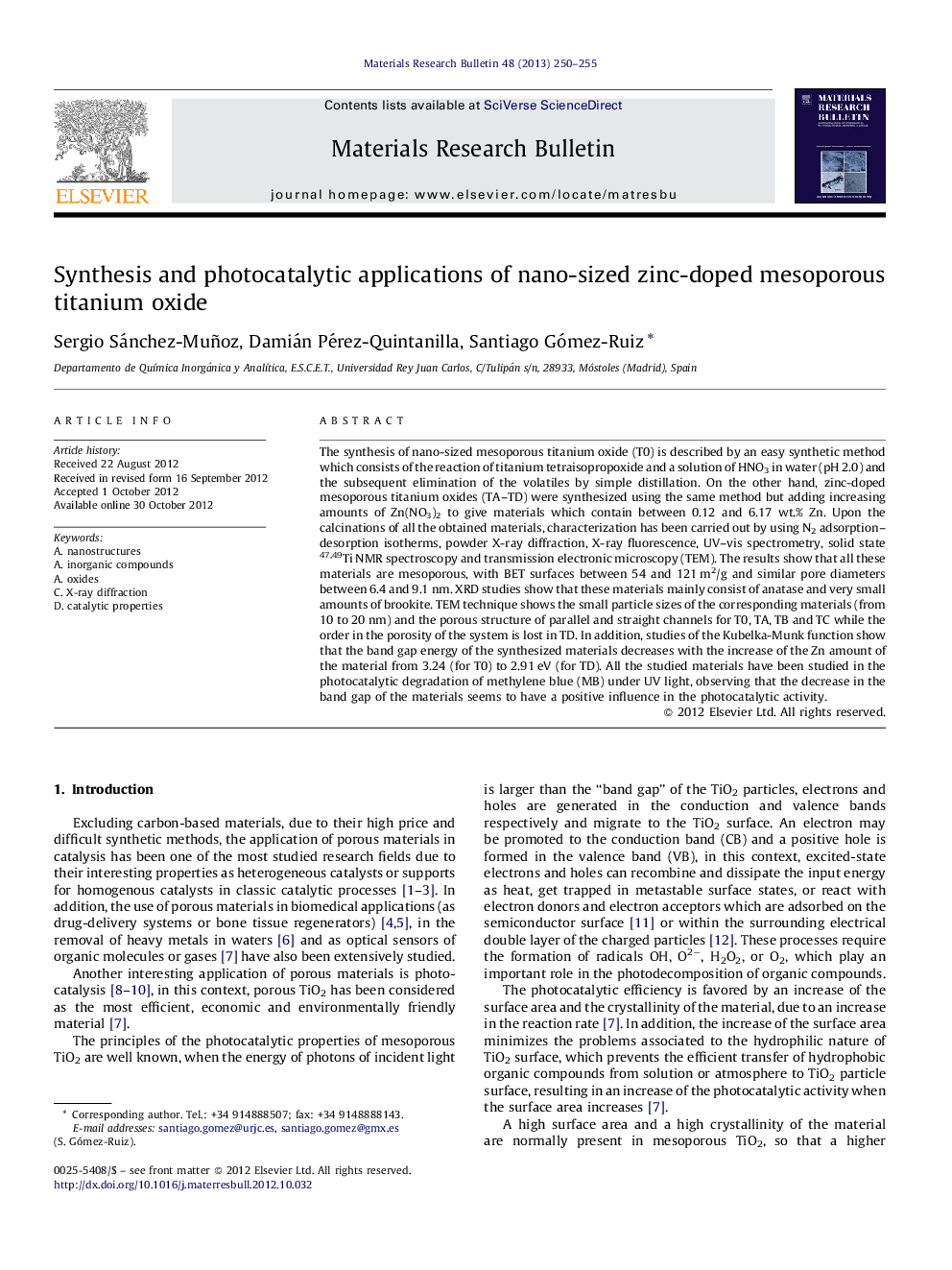| کد مقاله | کد نشریه | سال انتشار | مقاله انگلیسی | نسخه تمام متن |
|---|---|---|---|---|
| 1489819 | 992313 | 2013 | 6 صفحه PDF | دانلود رایگان |

The synthesis of nano-sized mesoporous titanium oxide (T0) is described by an easy synthetic method which consists of the reaction of titanium tetraisopropoxide and a solution of HNO3 in water (pH 2.0) and the subsequent elimination of the volatiles by simple distillation. On the other hand, zinc-doped mesoporous titanium oxides (TA–TD) were synthesized using the same method but adding increasing amounts of Zn(NO3)2 to give materials which contain between 0.12 and 6.17 wt.% Zn. Upon the calcinations of all the obtained materials, characterization has been carried out by using N2 adsorption–desorption isotherms, powder X-ray diffraction, X-ray fluorescence, UV–vis spectrometry, solid state 47,49Ti NMR spectroscopy and transmission electronic microscopy (TEM). The results show that all these materials are mesoporous, with BET surfaces between 54 and 121 m2/g and similar pore diameters between 6.4 and 9.1 nm. XRD studies show that these materials mainly consist of anatase and very small amounts of brookite. TEM technique shows the small particle sizes of the corresponding materials (from 10 to 20 nm) and the porous structure of parallel and straight channels for T0, TA, TB and TC while the order in the porosity of the system is lost in TD. In addition, studies of the Kubelka-Munk function show that the band gap energy of the synthesized materials decreases with the increase of the Zn amount of the material from 3.24 (for T0) to 2.91 eV (for TD). All the studied materials have been studied in the photocatalytic degradation of methylene blue (MB) under UV light, observing that the decrease in the band gap of the materials seems to have a positive influence in the photocatalytic activity.
Nano-sized mesoporous titanium oxide (T0) and zinc-doped nano-sized mesoporous titanium oxides (TA–TD) were synthesized by a simple method and characterized by different techniques. All materials have been studied in the photocatalytic degradation of methylene blue under UV light, observing that the decrease in the band gap of the materials seems to have a positive influence in the photocatalytic activity.Figure optionsDownload as PowerPoint slideHighlights
► Nano-sized mesoporous TiO2 and Zn-doped TiO2 have been synthesized and characterized.
► Band gap of the Zn-doped TiO2 decreases when the Zn amount increases.
► Materials consist of porous particles (10–20 nm).
► The photocatalytic degradation of MB has been studied for these materials.
► A decrease in the band gap of the materials enhances the photocatalytic activity.
Journal: Materials Research Bulletin - Volume 48, Issue 2, February 2013, Pages 250–255